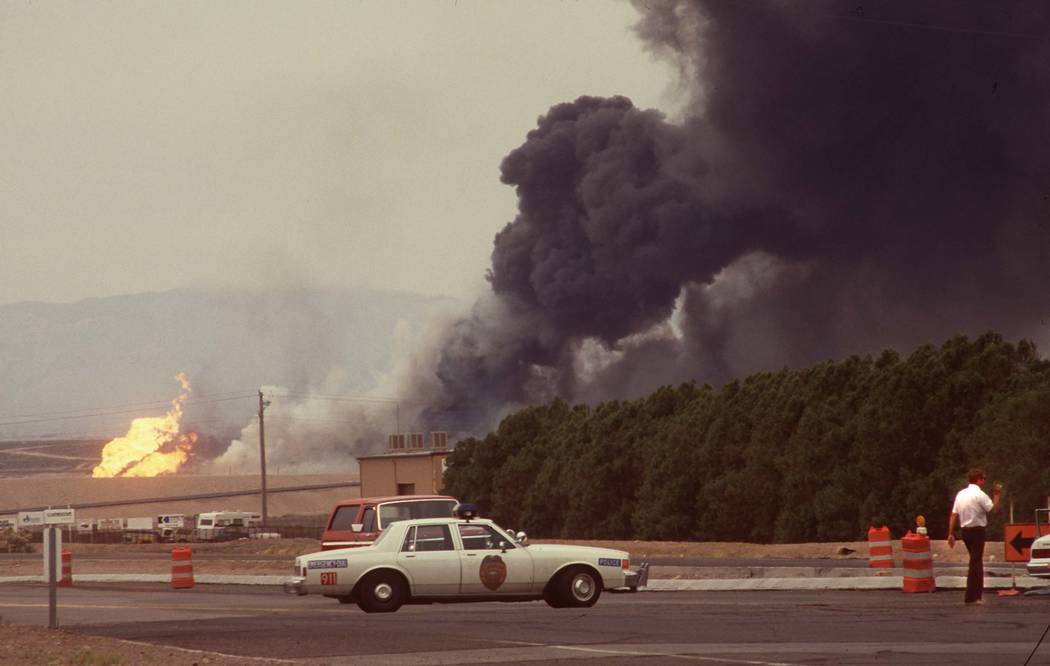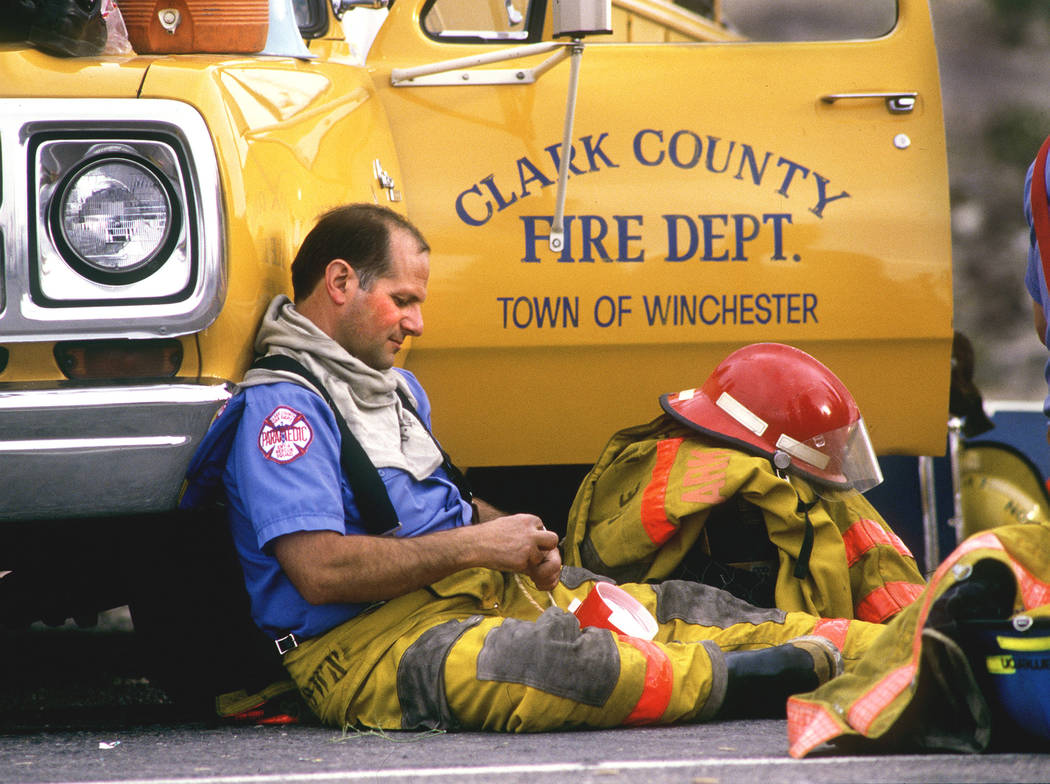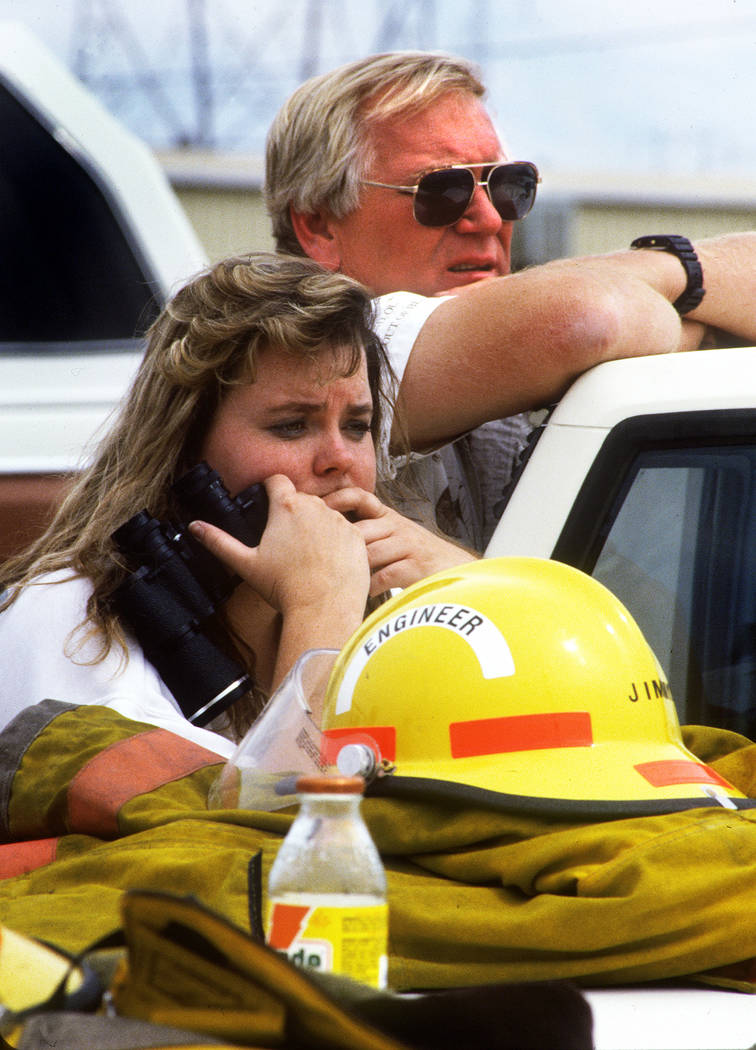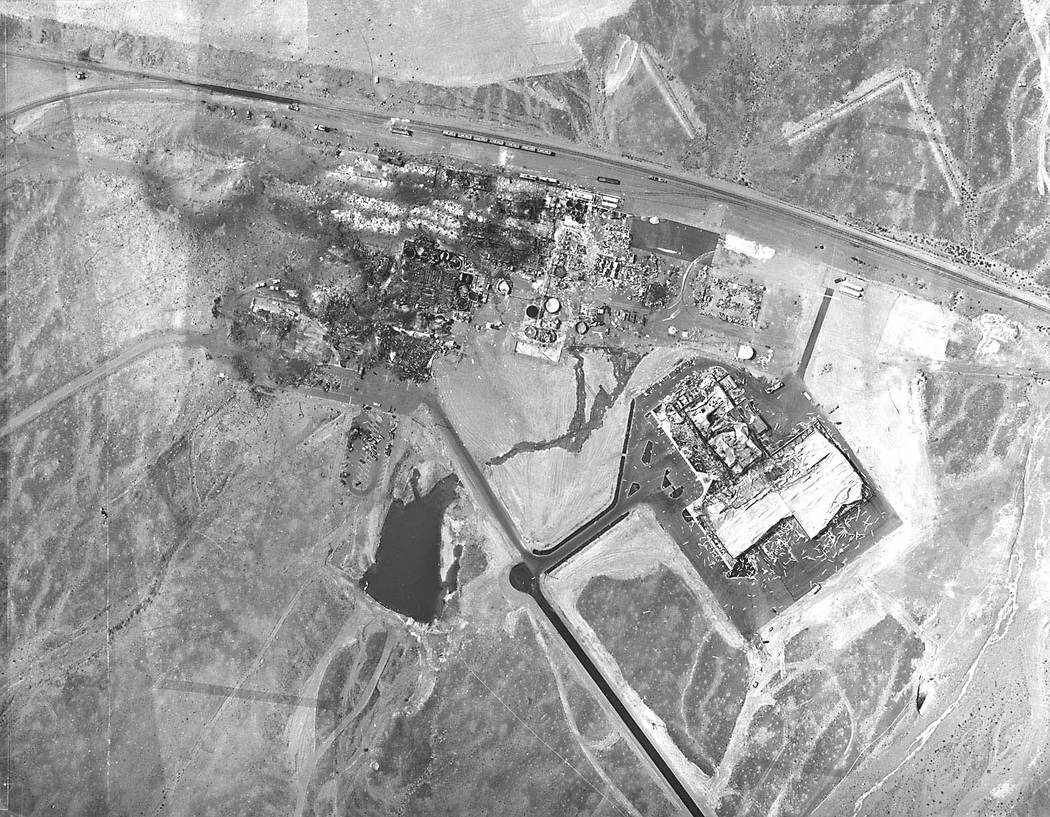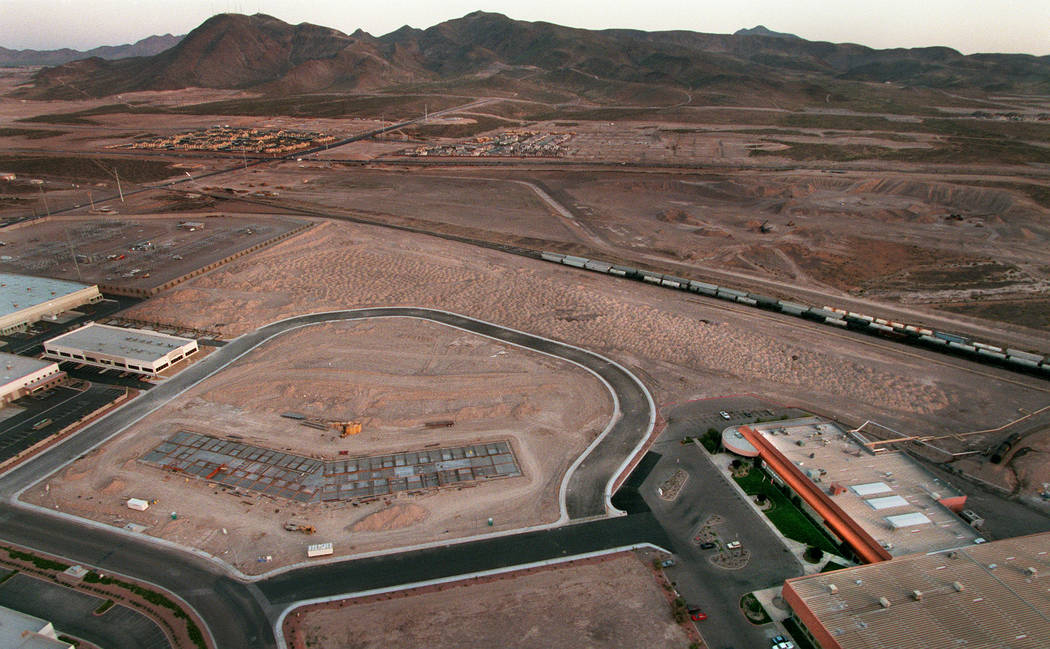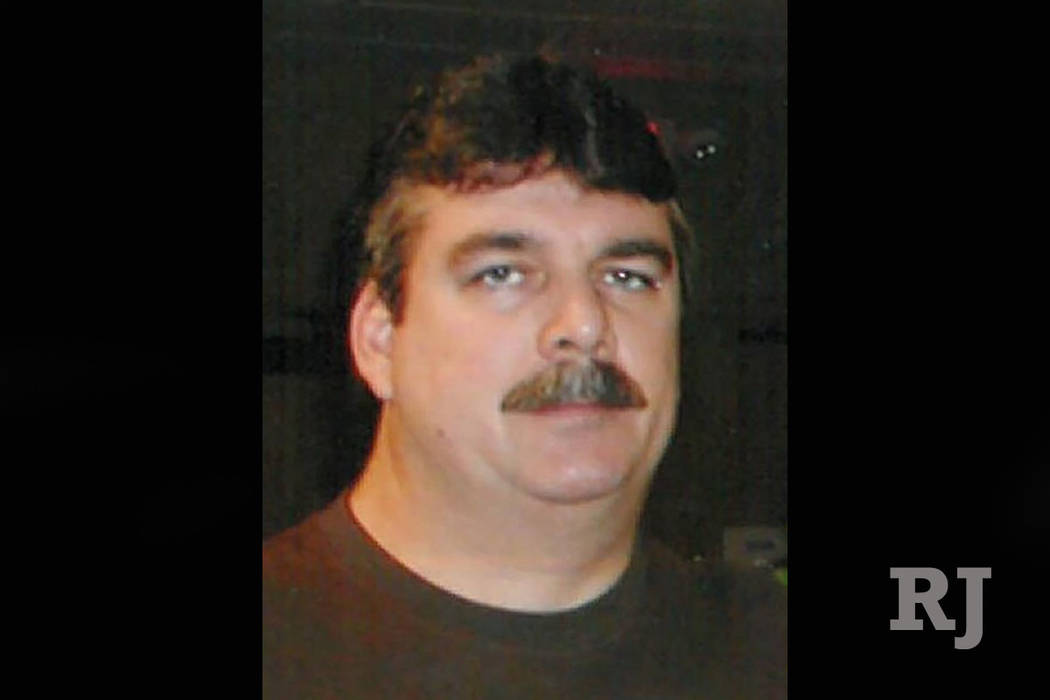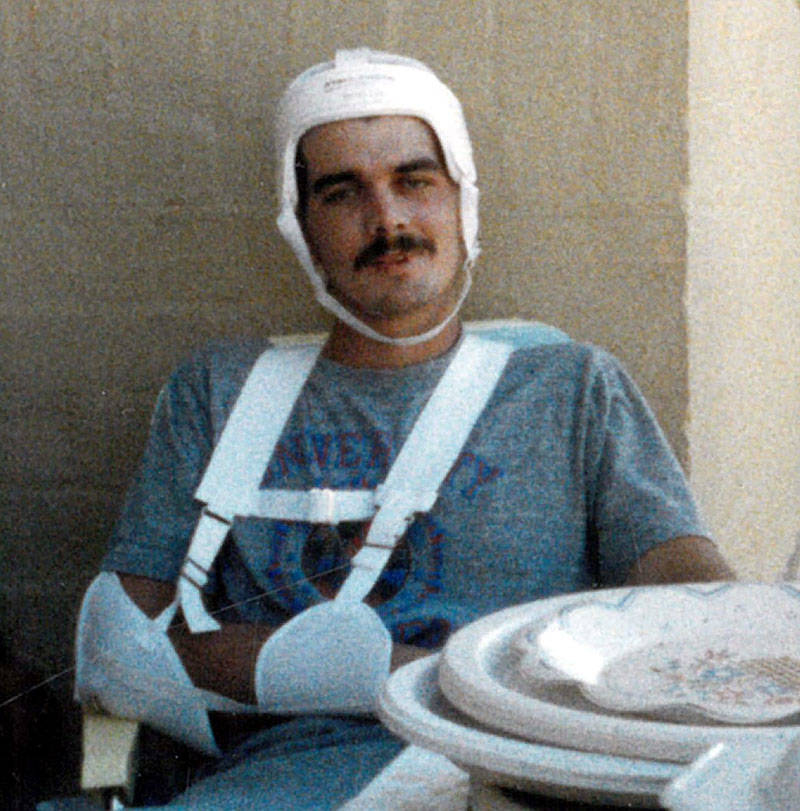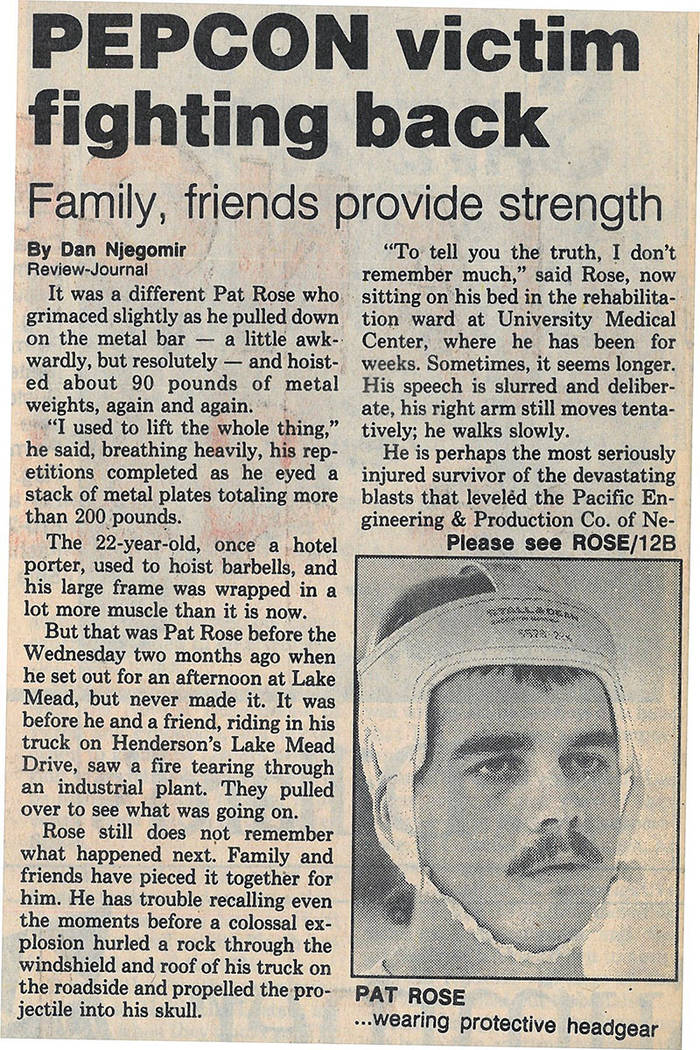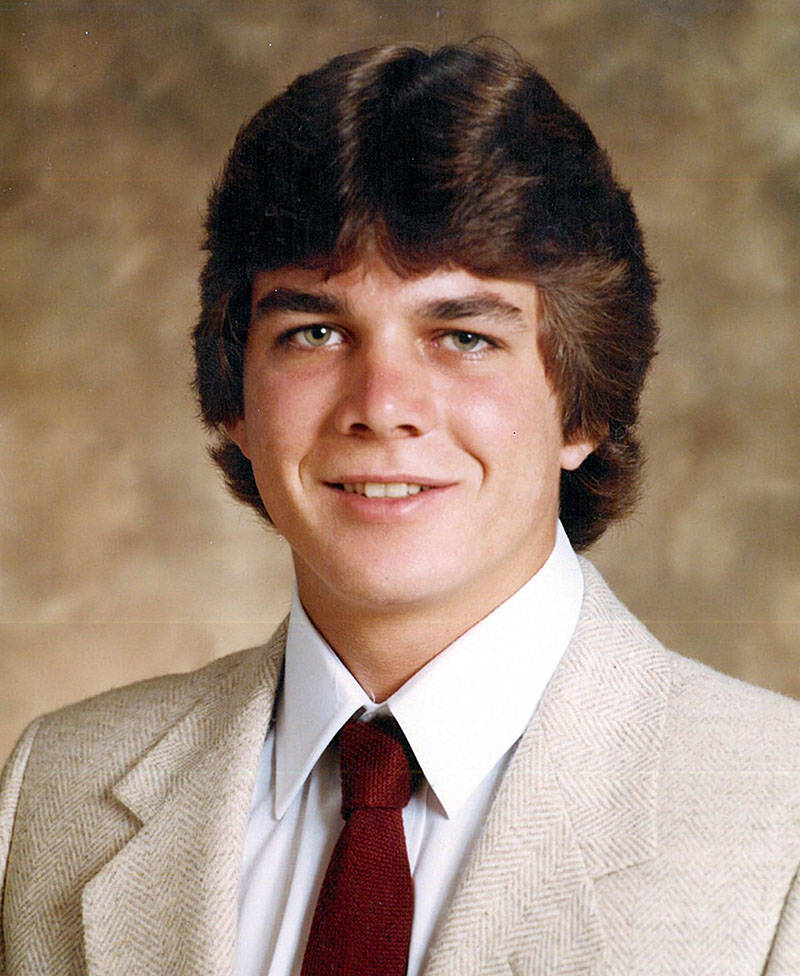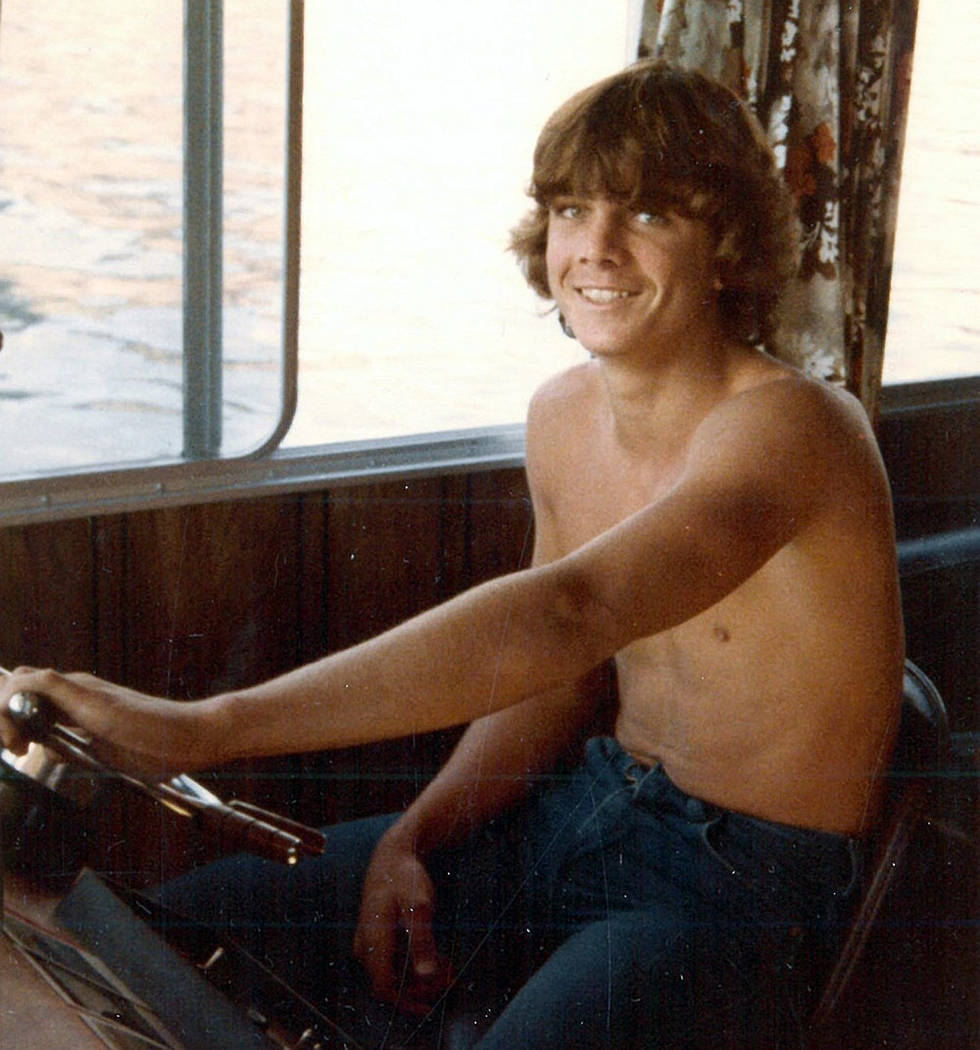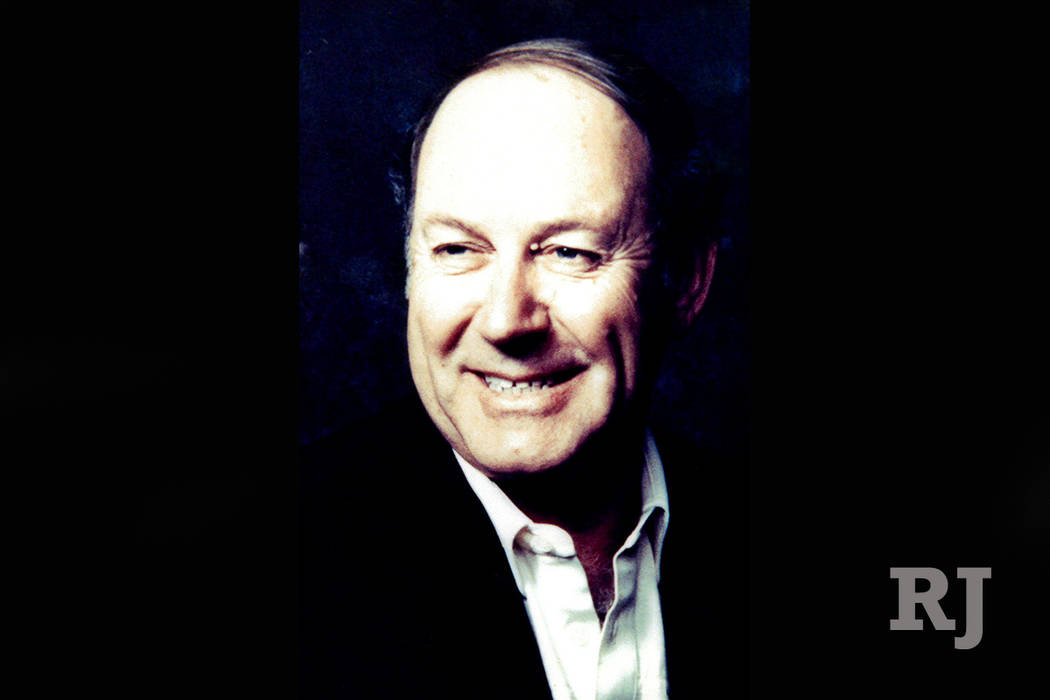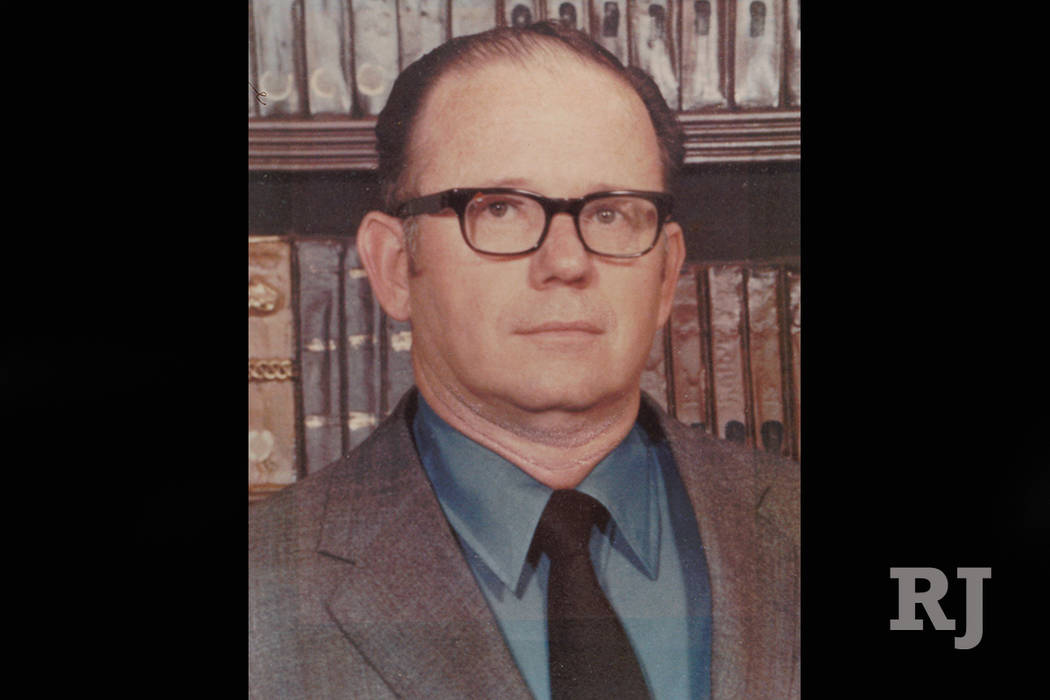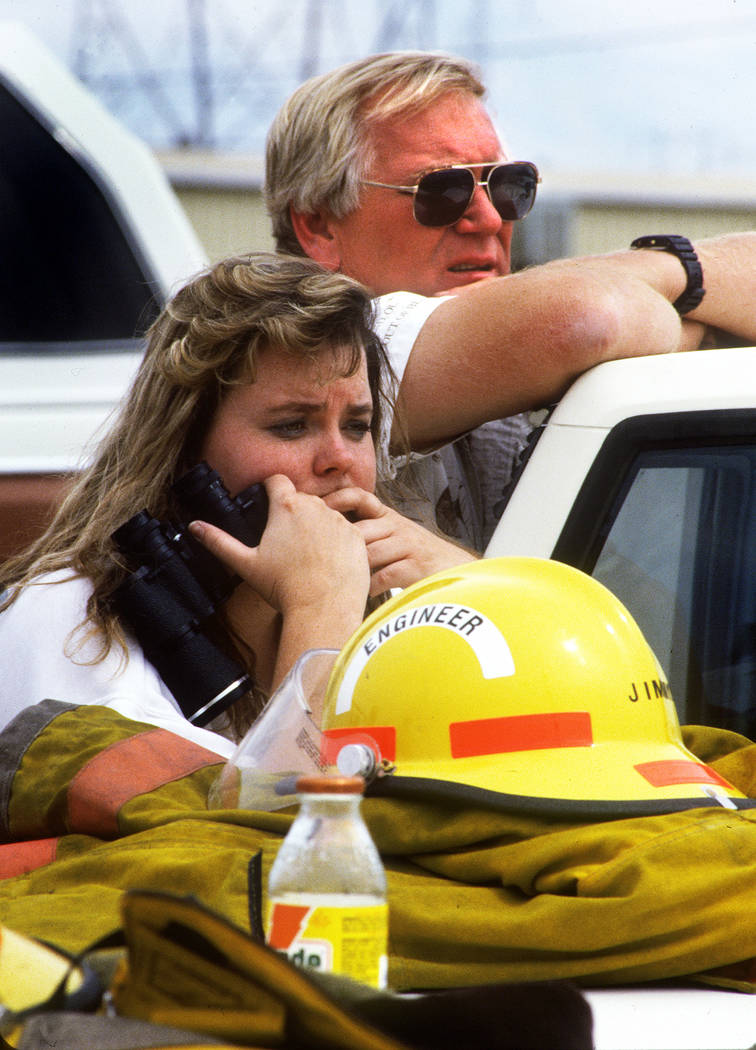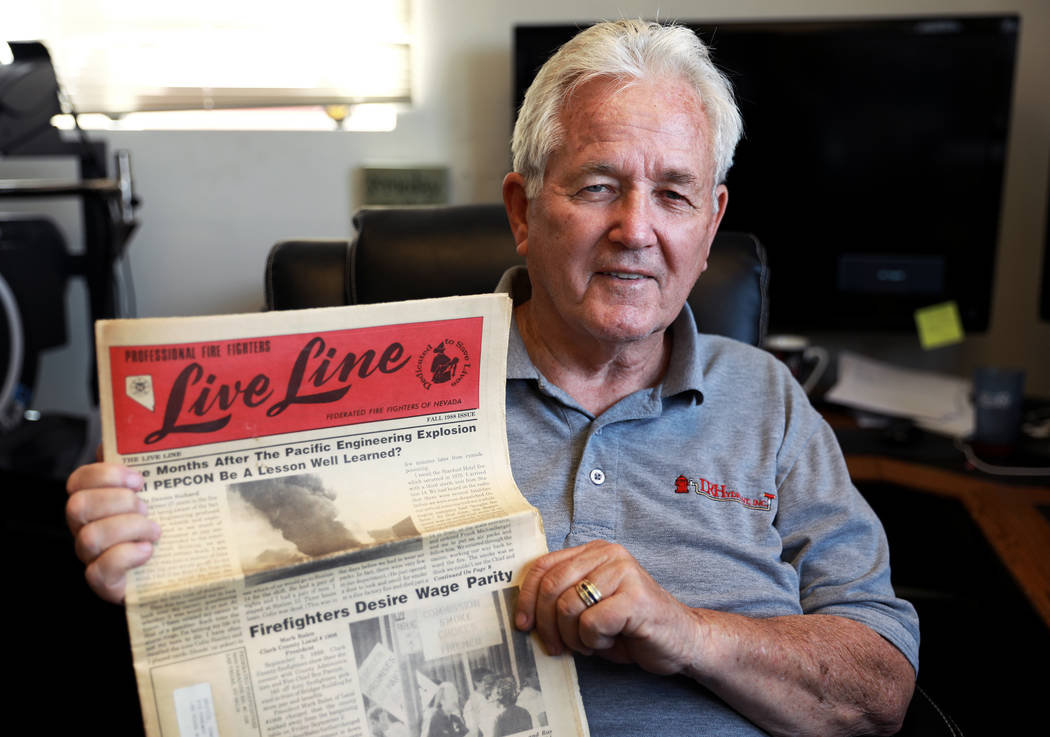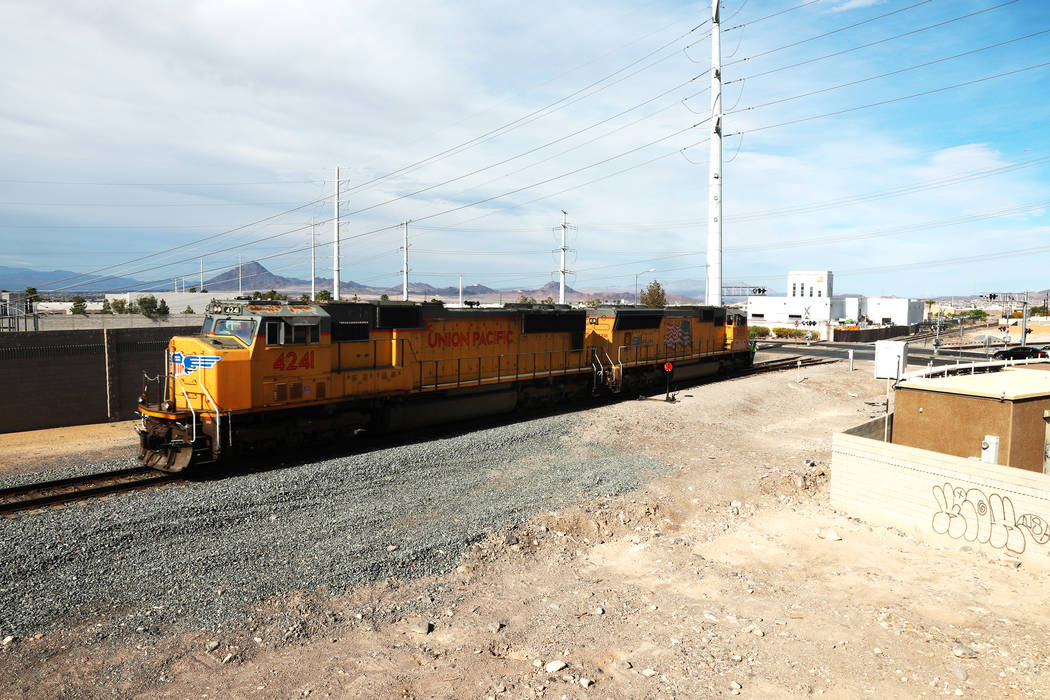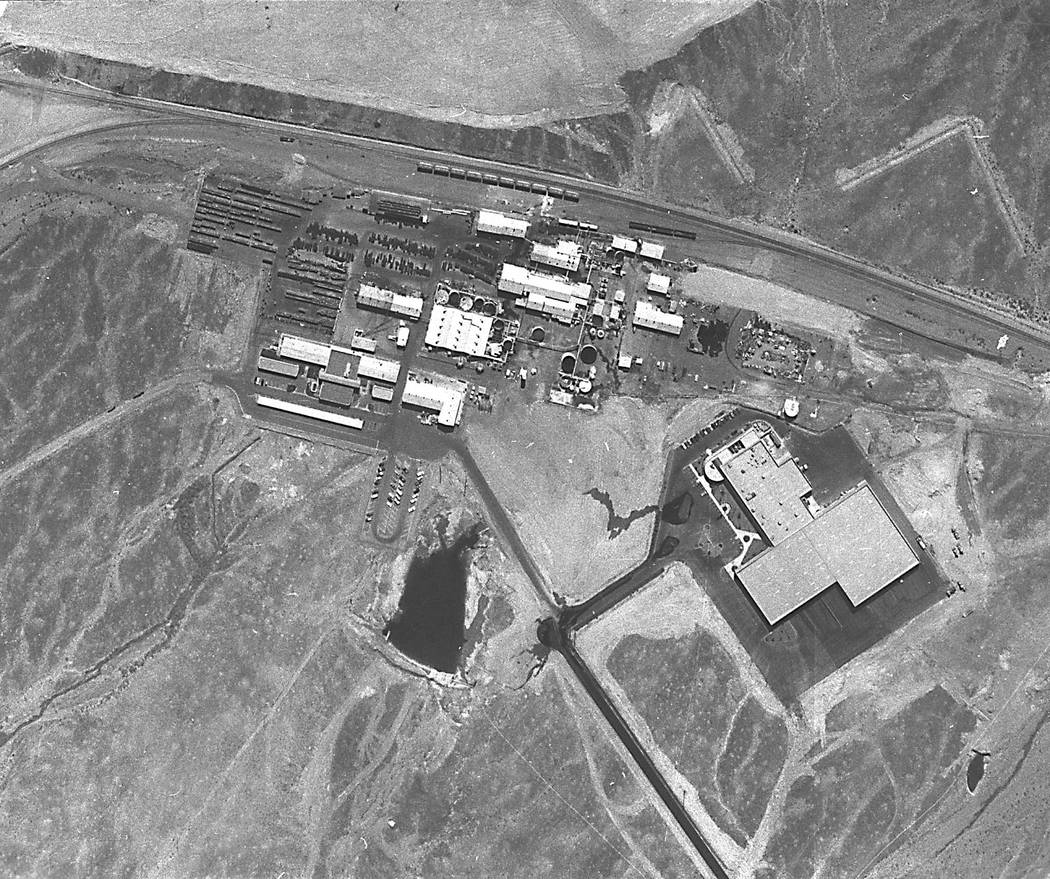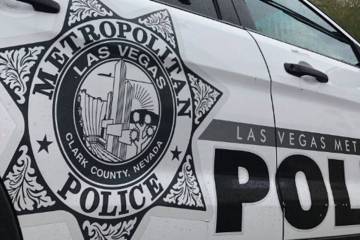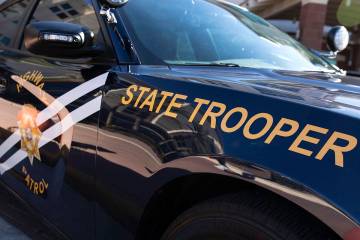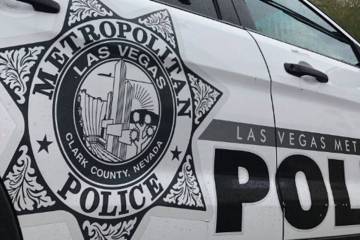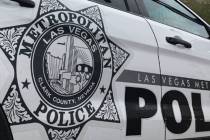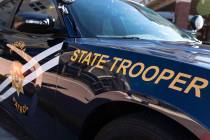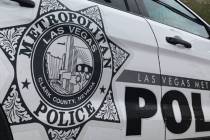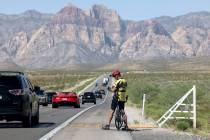30 years ago, massive PEPCON explosion rocked Las Vegas Valley
Nearly 30 years ago, Pat Rose was driving to Lake Mead to spend the day out on the water with a friend when a large plume of smoke hovering over the PEPCON plant prompted him to pull over.
What happened next irrevocably changed his life.
Parked about 2,000 feet from the plant on Henderson’s Lake Mead Drive, he and his friend watched in awe as the smoke and flames grew.
Inside the burning industrial plant, company controller Roy Westerfield called 911. It was just before noon on May 4, 1988.
“We just had a big explosion, and everything’s on fire,” Westerfield, 62, told a dispatcher.
The event that shook the Las Vegas Valley would later be described — in a 2012 NASA case study — as the largest domestic, non-nuclear explosion in recorded history.
Westerfield and one other employee, Bruce Halker, didn’t make it out of the PEPCON plant alive. At least 370 others were injured.
Present that day were an estimated 4,500 tons of ammonium perchlorate, a powerful oxidizer found in solid fuel rocket boosters used for NASA space shuttles. PEPCON, which was located at what is now the junction of U.S. Highway 95 and the 215 Beltway in Henderson, was one of two major manufacturers of the oxidizer in the country at the time.
The initial fire, which set off three massive explosions that could be felt throughout the valley, erupted at about 11:30 a.m. During a standard repair, investigators learned, sparks from a welding torch ignited fiberglass material, and within minutes, the fire had spread at a rapid pace because of the stockpile of ammonium perchlorate.
Some 17 miles away at University Medical Center, Carol Rose, a nurse, was working on the fourth floor when the hospital began to shake. It would be more than four hours before she learned that her 22-year-old brother-in-law, Pat Rose, was severely injured in the blasts and was undergoing brain surgery next door at Valley Hospital Medical Center.
Then and now
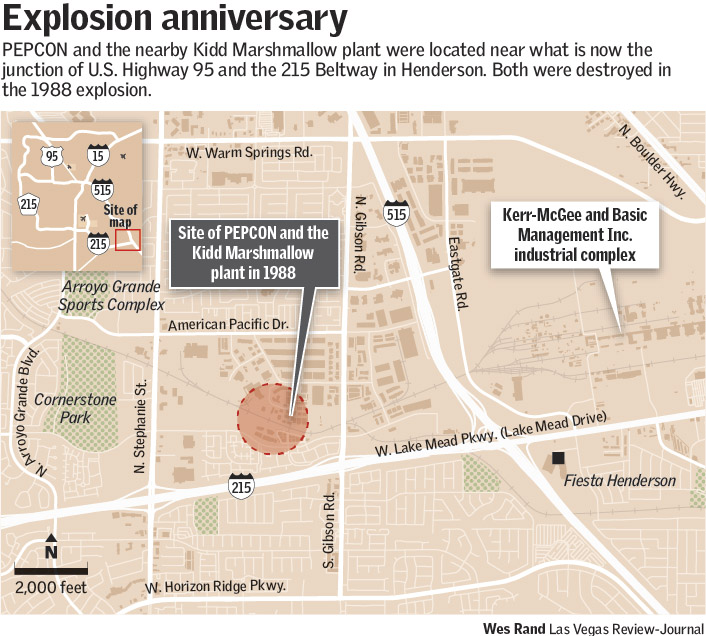
Two years earlier, the Challenger space shuttle had exploded mid-flight, prompting NASA to halt its exploration program. But PEPCON, an acronym for Pacific Engineering & Production Company of Nevada, continued to produce ammonium perchlorate, and the supply accumulated over the next 15 months.
That stockpile, along with poor housekeeping and storage practices, helped cause the explosions, Clark County Fire Department investigators later determined.
At the time of the blasts, PEPCON also had no formal evacuation plan and lacked an audible alarm system.
Instead, the first blast — the smallest of the three — acted as a warning to employees.
After the disaster, PEPCON was renamed Western Electrochemical Co. and relocated about 14 miles northwest of Cedar City, Utah. It is now called Amerian Pacific.
“When you get a chance to do it again, you implement things that you otherwise would not be able to do in an already-operating plant,” Chief Operating Officer Dave Thayer told the Las Vegas Review-Journal in April, ahead of the 30th anniversary of the explosions. “You design it and build it so that it’s easier to maintain.”
Thayer was a processing engineer at the time, and one of the 75 surviving employees working the day of the explosions.
He said the biggest difference now is that the Southern Utah facility occupies about 150 acres, and the distance between buildings is at least 500 feet. The Henderson plant occupied less than 15 acres, Thayer said, and buildings were separated by fewer than 50 feet.
Hal Murdock, the company’s current president and CEO, added that unlike 30 years ago, the top company officials get out onto the plant as often as they can.
“This is a focus for both Dave and me,” he said. “We go out and assess how our folks are doing safety-wise in compliance with our procedures. And we’re pretty tough.”
In the aftermath of the explosions, Nevada enacted 46 regulations for handling ammonium perchlorate, and the 1991 Chemical Catastrophe Prevention Act set limits for chemical storage to prevent another disaster of that magnitude.
Far-reaching damage
The effects of the thunderous blasts were felt within a 10-mile radius of ground zero. The neighboring Kidd Marshmallow plant was demolished.
Shock waves destroyed buildings in their wake. Windows were shattered, walls were cracked and doors were broken. Property damage to surrounding businesses and homes was put at $74 million.
Two of the biggest blasts measured 3.0 and 3.5 on the Richter scale at observatories in California and Colorado, NASA found. Investigators even compared the explosion to a 1-kiloton air-blast nuclear detonation.
The fire burned out of control for the next five hours, and the smoke rose nearly 1,000 feet into the sky. It could be seen as far as 100 miles away, the Review-Journal reported at the time.
The other side of survival
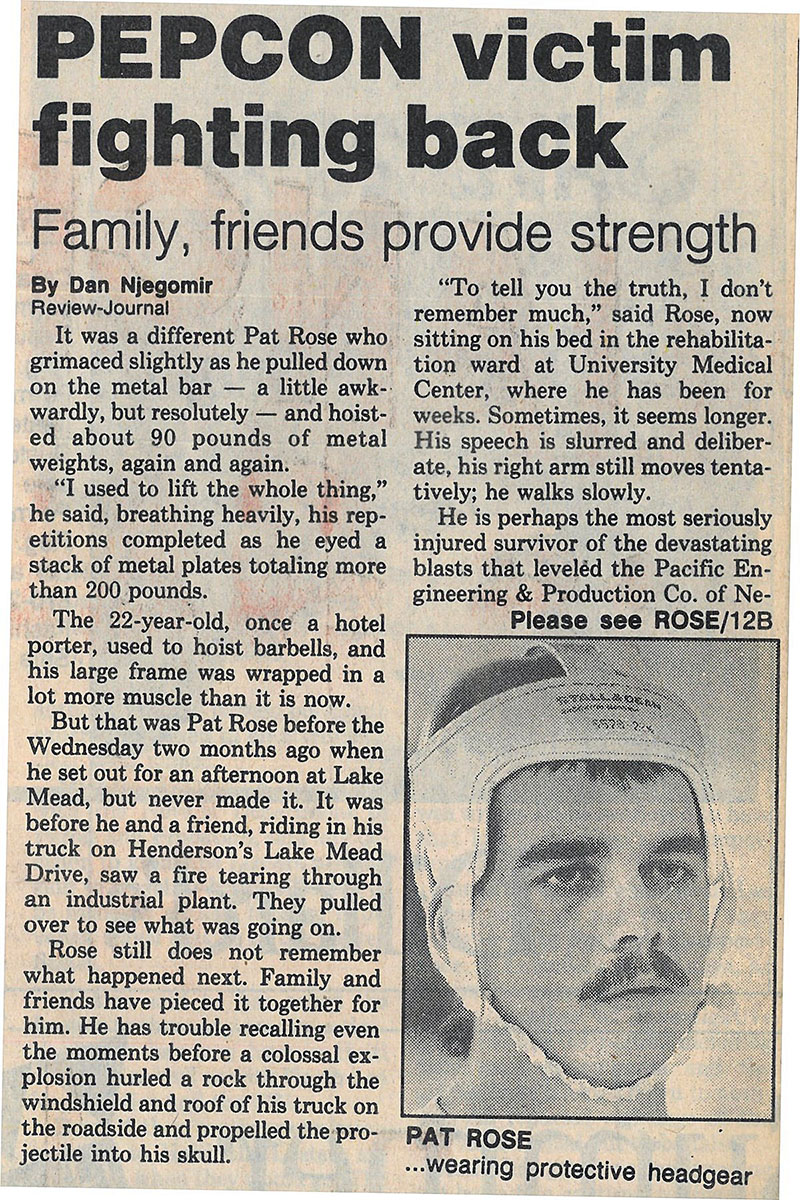
Las Vegas Review-Journal Archive
Two months after the blasts, Pat Rose told the Review-Journal that the last thing he remembered before waking up in the hospital was pulling over to watch the massive fire.
He was the most severely injured in the blasts. The mammoth explosions hurled a boulder through the roof and windshield of his truck, leaving a gaping hole on the left side of his skull.
Before the blasts, Pat Rose loved being outdoors. His family said he was adventurous and strong. But after, his family said, he was never the same.
“You think somebody has survived and life is good, but there are so many other aspects of survival,” his oldest sister, Phyllis Rose, said in an April interview.
Her brother survived another 29 years. He died Sept. 27 at age 51, more than half a year before the 30th anniversary of the explosions that changed the course of his life.
He was never able to regain full mobility on the right side of his body, and speaking remained a challenge for him up until his death.
Because of his injuries, Pat Rose received the largest individual settlement. But it made him distrustful of people, his family said, and he never got married or had children.
“The explosions took away something from him that I think is one of the most valuable things in life.”
She noted that her youngest brother led a private life afterward.
But 30 years after the blasts, even in death, his family said, Pat Rose found a way to leave his mark on the world. His entire estate will be donated to three local charities, supporting causes that were close to him.
“Having been a survivor and now turning around and passing it on, he’s a hero in his own way,” Phyllis Rose said.
Contact Rio Lacanlale at rlacanlale@reviewjournal.com or 702-383-0381. Follow @riolacanlale on Twitter.
Related
Former Henderson fire captain recalls day of PEPCON explosions
Las Vegas woman, now 30, was injured as newborn in PEPCON blasts
Running toward smoke: memories of covering PEPCON explosion 30 years ago



